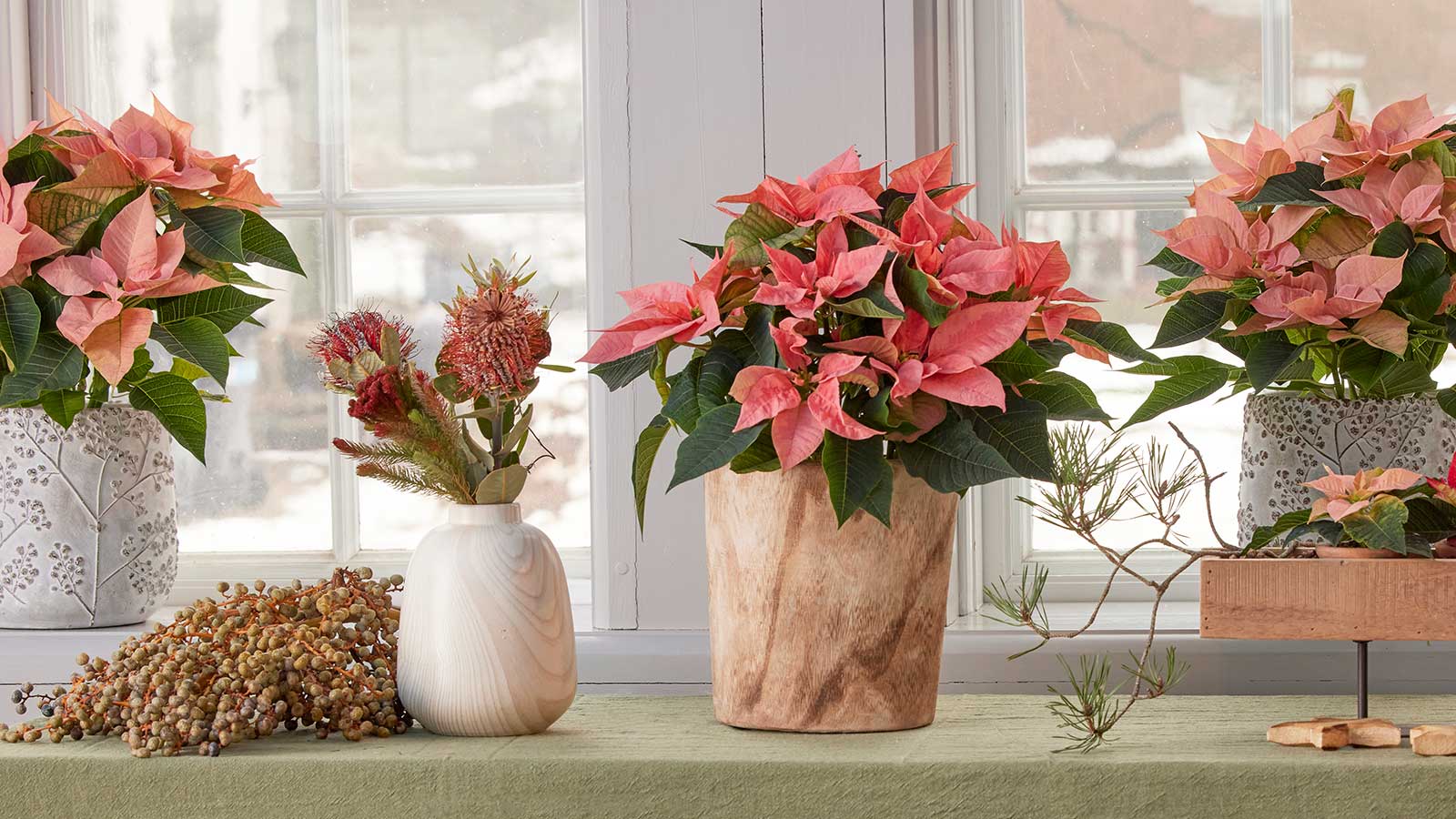
Q: I usually throw my poinsettias away after the holidays, but I recently heard they can last all year with the right care. I'd love to try it – do you have any advice?
A: These popular Christmas plants fade as the festive season ends, but that's no reason to throw them away. They're tender perennials, so a healthy poinsettia will last until next Christmas, and even beyond, if you look after it properly.
There are a few factors to consider, from providing the right temperature to giving it a prune. But, on the whole, it's not too tricky to give it a go at home. Below, plant-care experts share their tips.
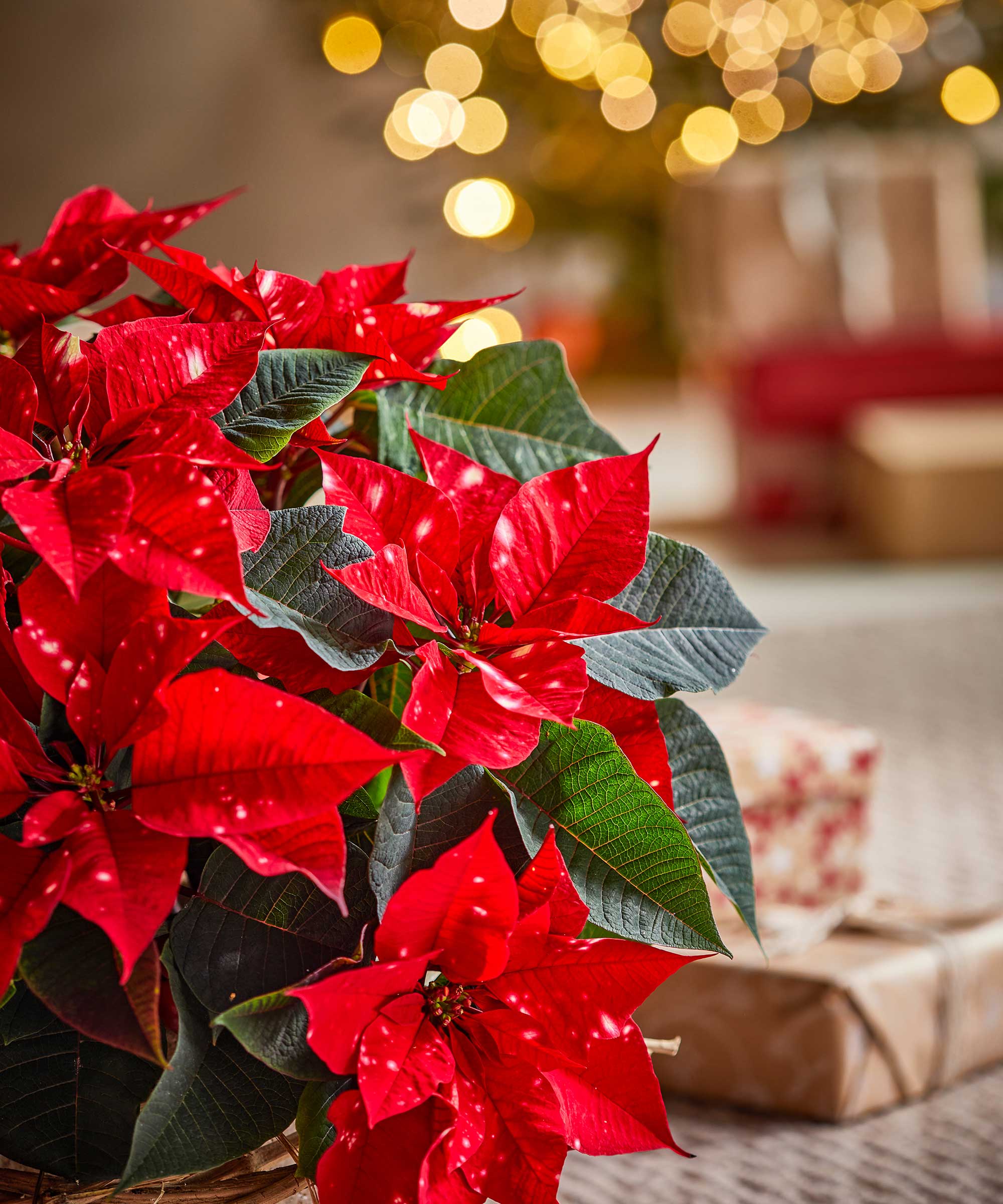
3 steps to keep a poinsettia alive after Christmas
Simply follow these key tips for a thriving indoor plant.
1. Give it time to rest
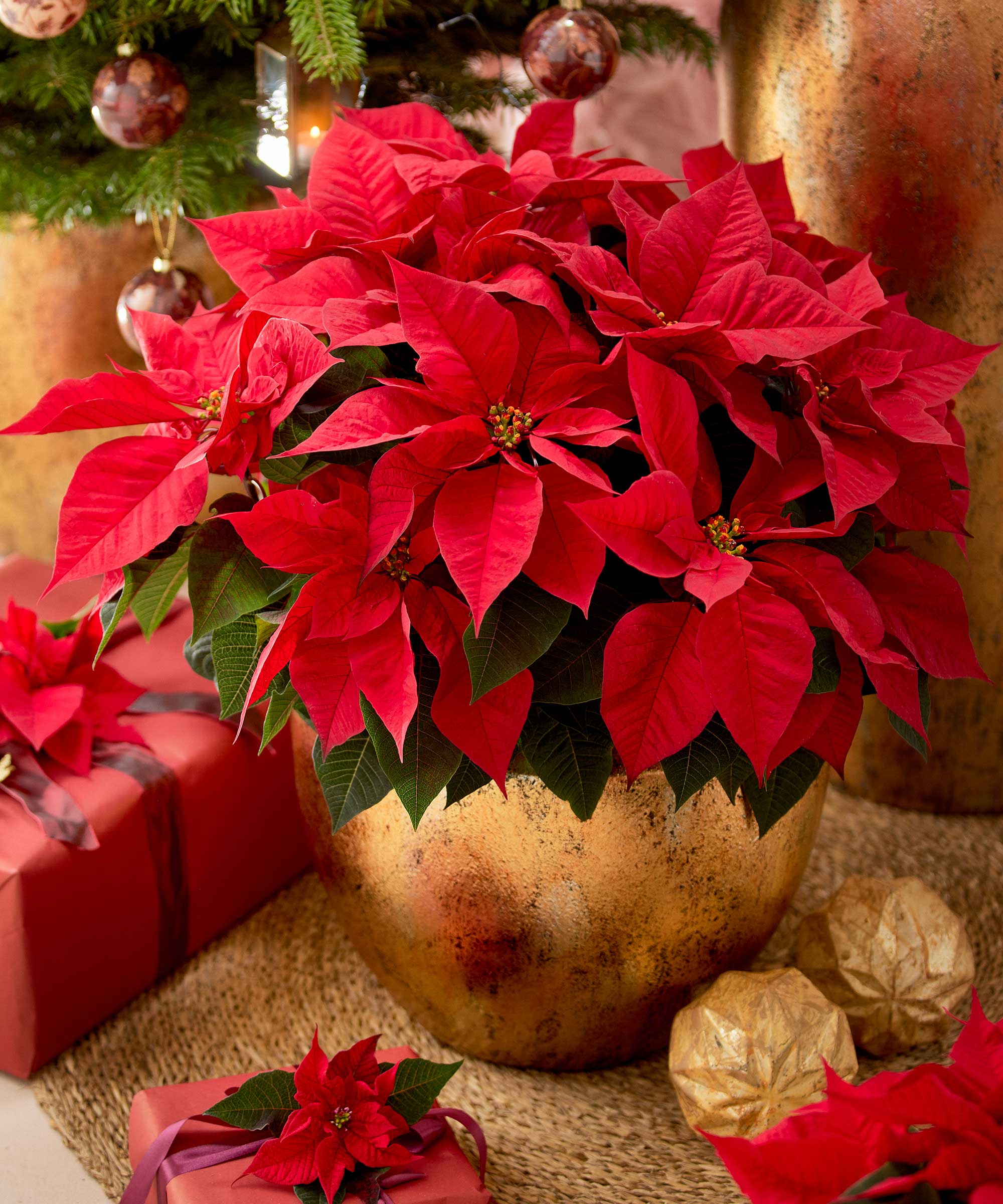
After the holidays, Christmas poinsettias stop flowering, their bracts fade, and they may drop their leaves, says Nastya Vasylchyshyna, resident botany expert at Plantum.
'This is the time when the plant goes dormant, preparing itself for future active growth and blooming next holiday season,' she says. To help it on its way, there are a few things you need to do.
The first step is to prune it. 'When the poinsettia begins to drop its bracts, make sure to cut back the bare shoots by about one-third or half their length, leaving about four to five inches at the base,' Nastya advises. Bear in mind that the sap is an irritant, so be sure to wear gardening gloves.
You'll also need to move it somewhere slightly cooler for four to six weeks. 'During dormancy, the optimal temperature range for this plant is between 55 and 60ºF,' she says. The location should be well-lit, she adds.
Water your poinsettia less often during this period, too. 'As the temperature goes down, the soil will take longer to dry,' Nastya explains. 'To prevent waterlogging, give the poinsettia a drink when the topsoil dries out by about two inches.'
2. Repot in late spring
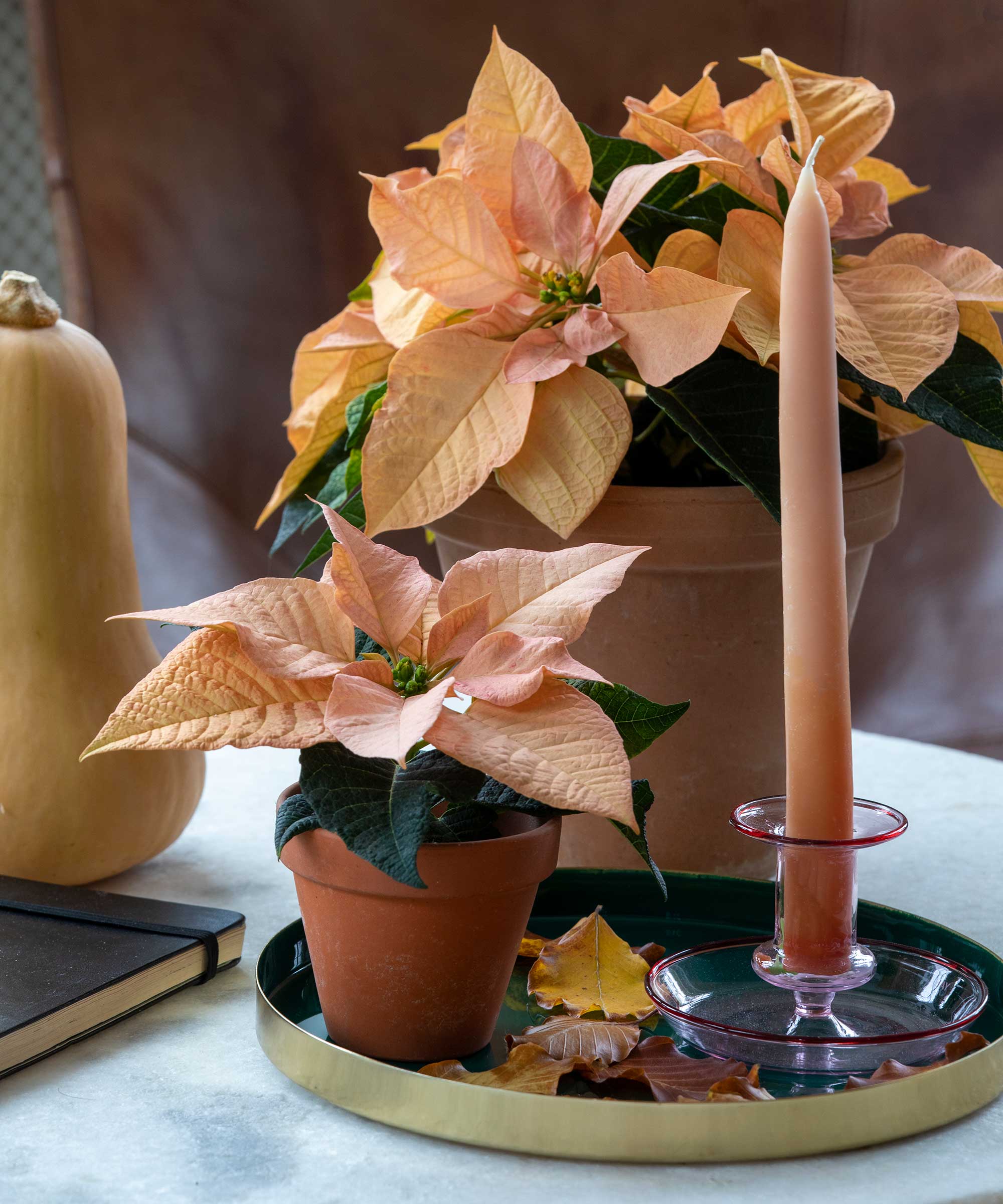
Poinsettias should start growing again in late spring. At this point, you can repot them.
This will stimulate new growth, says Nastya. 'Opt for a nutrient-rich, well-draining, and slightly acidic potting mix.' Make sure the new container has drainage holes, she adds.
3. Adjust your maintenance routine during the growing season
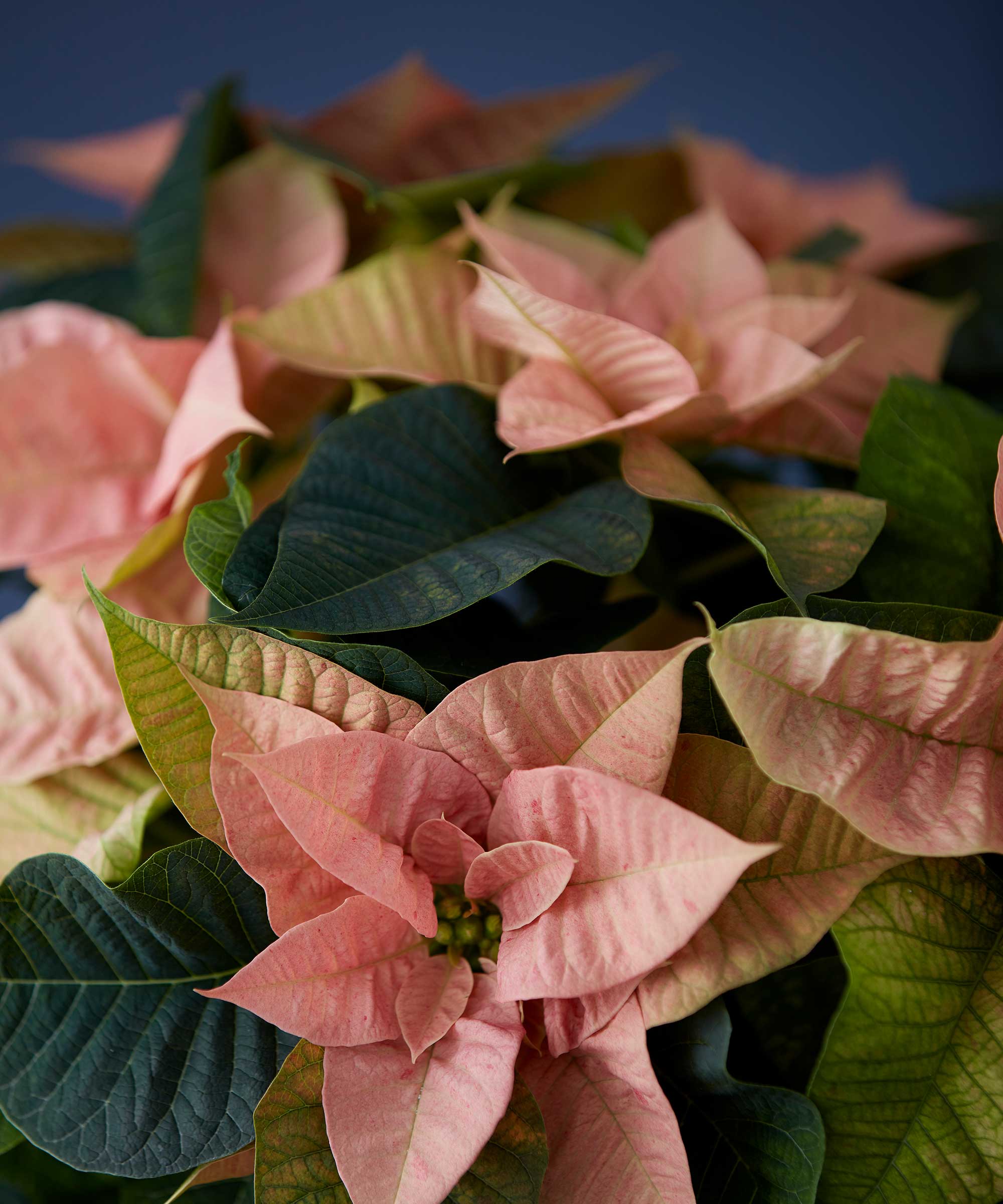
Once the growing season begins, you'll also need to make some slight adjustments to your care routine.
Nastya recommends gradually increasing the temperature to 64-68°F and starting to water more frequently. It will wilt and display leaf curl when it's thirsty, notes Paris Lalicata of The Sill. 'Be sure to evenly and thoroughly saturate the soil.'
Keep the lighting bright, but don't overdo it. As Paris advises, 'Avoid strong, direct sunlight from a south window unless the sunbeams are diffused by a sheer curtain. You can also use a grow light if natural lighting isn’t enough.'
Continue caring for your poinsettia like this over the summer. You may want to periodically fertilize it, too.
In the fall, you'll need to ensure your poinsettia is in complete darkness during the night to encourage new blooms.
Top tip: According to Paris, pinching back the plant as new growth emerges in late spring will maintain a compact, bushier shape.
FAQs
How can you deal with pests on poinsettias?
'Regularly inspect the plants for common issues like whiteflies, spider mites, or aphids,' advises Paris. 'You can use a naturally derived insecticide or neem oil as a safe, effective treatment, applying it to all plant surfaces, including the undersides of leaves.'
Maintaining proper growing conditions and keeping the plants clean of debris will discourage infestations, she adds.
Excess moisture in the soil may attract fungus gnats, adds Nastya. 'It’s best to get rid of their larvae by replacing the soil in the pot. Follow it up by adjusting the watering schedule, making sure the topsoil dries between watering sessions.'
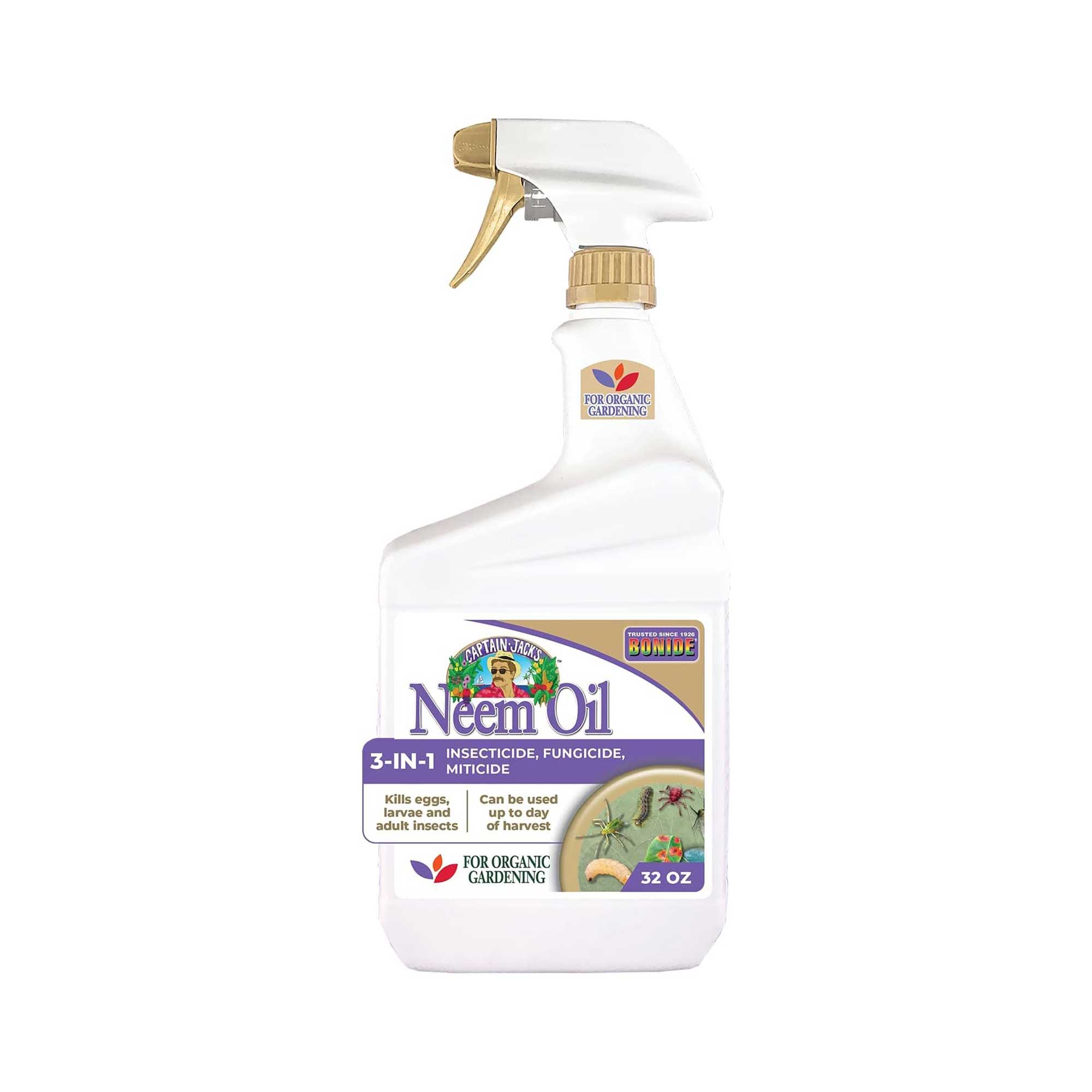
This convenient ready-to-use spray is suitable for organic gardening for plants indoors and out.
Can you move a poinsettia outdoors?
If you're wondering whether poinsettias can live outside in winter, they will struggle to survive outside where temperatures drop below 50°F. You can, however, move your poinsettia onto a patio during the warmer months, just be sure to bring it back indoors before temperatures drop.
There are other things you can do with a poinsettia after the holidays if you don't fancy keeping it as a houseplant. Our guide will give you some ideas, such as using them for craft activities.







